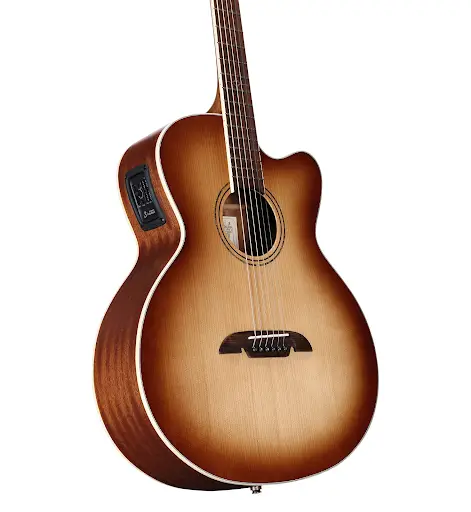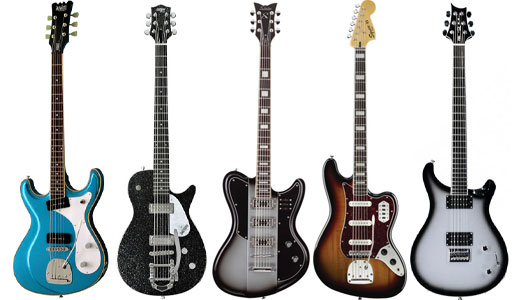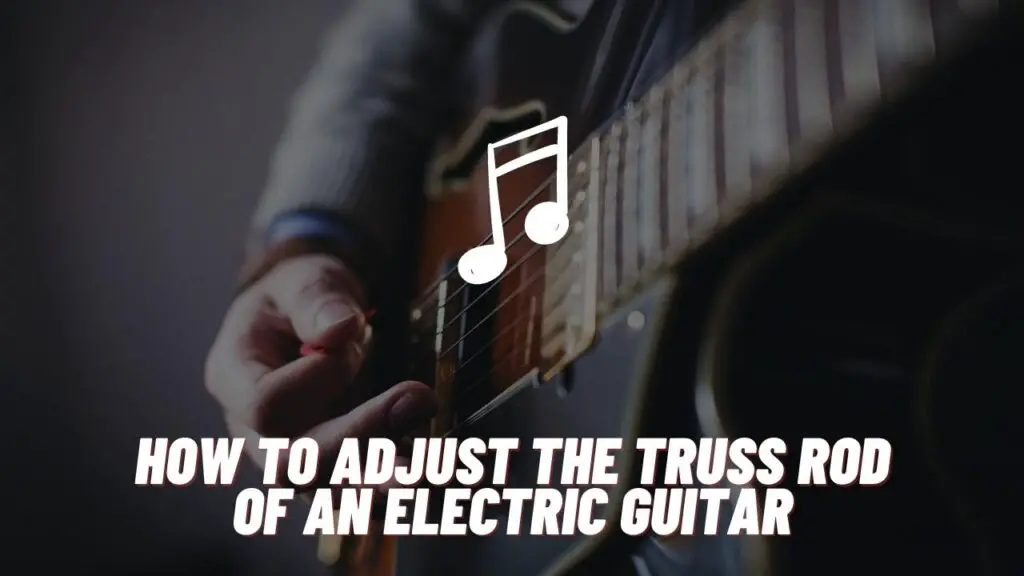So, you’re thinking about buying a Baritone Guitar? Great idea! Playing baritone guitar will expand your sonic horizons, enliven your songwriting, build your guitar chops, and add a lot of joy to your life as a musician.
If you want to jump straight to our baritone guitar reviews, please see our list of electric baritone reviews and acoustic baritone reviews. And if you’re still unsure as to whether you should invest in a baritone guitar or not, check out our 5 Reasons to Buy a Baritone Guitar!
In this baritone guitar buyer’s guide, we’ve put together the most important information you need to know to help you get started on your baritone journey, so read on!

1. A Few Things to Understand Before Buying Your First Baritone
Baritone guitars are limited-run or small-batch instruments. This means you should not expect lots of finish options (nearly all models come in one and only one color). Limited-run manufacturing also means that most music stores (even large retailers) may not have any baritone guitars on their shelves. Additionally, due to their growing popularity, many models can only be purchased on backorder, so you may have to wait a month or more to receive your instrument.
Baritone guitars feature higher gauge strings than standard guitars – much higher! For example, many electric baritones will come strung with .013 to .062 strings (compared to between .010 and .046 for standard electrics). Acoustic baritones often feature gauges between .016 and .070. These larger strings will change the feel and playing experience of the instrument.
Baritone guitars feature extended scale necks. Scale length refers to the distance between the bridge and the nut of the guitar. To accommodate larger strings and lower tuning, baritone guitars feature longer scale necks – sometimes nearly two inches longer than a standard guitar. Again, this will change the feel of the instrument.
2. Read Our Independent Reviews to Find the Perfect Baritone
Whether you’re able to play baritone guitars before buying or not, reading our reviews will give you extra information and allow you to benefit from our professional opinion. Our reviews are organized into sub-categories of acoustic baritone reviews and electric baritone reviews. We review production model instruments at an affordable price range for most musicians, as well as a few unique and custom options. We strive to provide honest, balanced reviews that describe the pros and cons of each instrument. We don’t have a relationship with any particular manufacturer or advertiser, so our reviews are unbiased and independent.

3. Order Online and Pick Up In-store (If Possible)
Remember the bit from step 1 about the limited run/small batch production nature of most baritone guitars? For this reason, you should not expect to walk into your local music store, find one on the shelf, and take it for a spin. I once spent an entire day searching music stores in the Seattle area and did not find a single baritone guitar.
With limited options on local shelves, you may need to buy sight unseen. The best way to buy sight unseen? Guitar Center. Guitar Center offers a 45-day satisfaction guarantee, making your trial risk-free. You can also select in-store pickup and pay no shipping costs. If you’re not satisfied, you can always complete your return in-store and pay no shipping. Plus, they have a comprehensive used guitar section as well, perfect if you’re looking for a baritone guitar that’s no longer in production.
Amazon can be a great option, especially for harder-to-find baritones and used baritones. Just check to if their A-Z guarantee applies to an item. For your convenience, we have mapped out price comparison options when possible.
If you’ve found our reviews and guides to be helpful, please click on one of our affiliate links before you make a purchase. You will never pay a higher price as a result of clicking on an affiliate link, and it really helps us out! Thank you in advance.

4. Adjusting the Instrument and Adjusting to the Instrument
Depending on your choice of instrument, you may end up needing to have some setup work done. Setting up a guitar generally refers to adjusting the truss rod (which alters neck relief and adjusts string action), adjusting intonation, and perhaps doing a little fret finishing work. If you find that your guitar has some nagging fret buzz or that the action is simply too high, setup work may be needed.
A few points of caution. If you haven’t done your homework and/or if you are not sure that you have the correct tool for your truss rod, don’t bother making the adjustments yourself. Either get properly equipped and prepared or use a professional. If you do choose to do your own adjustments, make slow incremental changes – especially while your hands are still adjusting to the baritone guitar.

The baritone guitar comes with its own unique learning curve. No, it’s not the same as picking up an entirely new instrument, but you may need to adjust your technique and build up your fretting hand strength slightly.
Concerning the strumming hand, many baritones (especially acoustics) react poorly to fast and furious strumming. At first, you may notice unexpected buzzing and your fingers may feel sore after a playing session. Keep at it regularly. Your muscles and calluses will catch up!
Wrapping Up
Thanks for taking the time to read our baritone guitar buyer’s guide. If you purchase a baritone and stick with it through the adjustment period, you will be rewarded with years of joy. It really does open up a new world of sonic possibilities, allowing you to become a more versatile guitarist in the studio and on stage.
Remember to check our electric baritone reviews and acoustic baritone reviews. We hope you enjoy your baritone journey!




